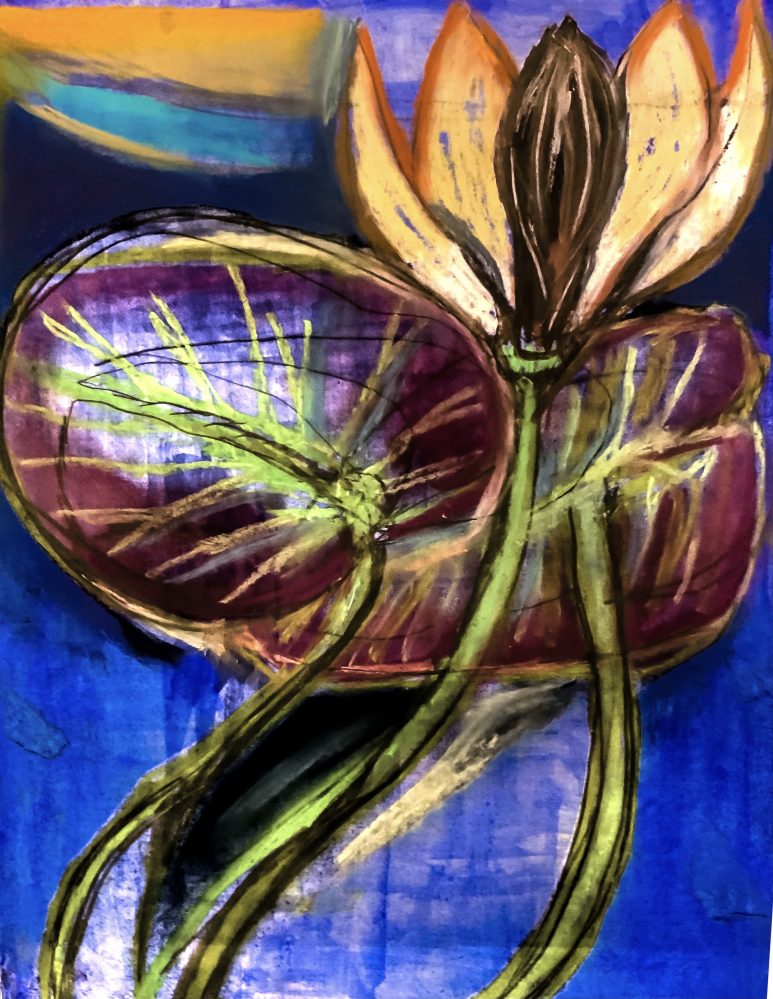
Water lilies, also known as Nymphaea, have an unusual reproduction system: the first day the water lily is in bloom, fluid covers the center of the flower containing the female reproductive organs. When an insect becomes trapped in the flower’s sticky center, the lily’s fluid will absorb the pollen left on its victim’s body. If no insect visits the flower on the first day, the sticky fluid will dry up and pollen is released in its place. When the water lily becomes pollinated, the flower and stem sink into the water and a berrylike fruit develops.
The underside of the leaf is dark purple or red, allowing the plant a maximum ability to utilize photosynthesis. The leaf’s stem works to transport air from the surface, down to the underwater rhizome. Each water lily rhizome will create a stem that produces one flower that is 2 to 6 inches across. The blossom opens in the early morning and closes by noon.
As one would imagine, the underwater nature of these plants makes water lily control quite interesting. In established plantings, there are some options for controlling water lilies. Removing the roots and rhizomes of the plant is possible, however, difficult. In most cases, this process will require tools specifically designed for the removal of aquatic weeds. Care also must be taken, as incomplete removal may cause the spread of the rhizomes. Many growers choose to implement the use of weed barrier (plastic sheet) within the pond.
Simply, pond weed barrier is placed at the bottom of the body of water after all water lily stalks and foliage have been removed. This barrier does not allow sunlight to reach the rhizomes, thus ensuring that they do not return.
I love the viscous slime underneath a water lily pad it is very hard not to touch them if you know about it, even now I search that texture but it is hard to come by. Wild water Lilies with a slimy under leaf grow around the edges of lakes and ponds in North America.
I often wondered if botanists might just realise in 2021, that the gel like substance underneath the Nymphaea, is the secret to everlasting Youth, Happiness and Immortality.
Perhaps use it to promote a cosmetic line of ‘lake collagen’ or something along those lines, against fine lines.
We would swiftly stop lining the beds of lakes and ponds with plastic sheets, so to stop our water lilies from reproducing. We would laugh at our older looking selves who tried to stop the beautiful Nympheas from their majestic Life Cycle. The entirety of the biodiversity of certain areas would be minimised, to maximise space and living conditions for the American Water Lily.
By 2022 , the Super flower would become our apex floral counterpart; And, just like bees we would all be enveloped in a gelatinous goo that would protect us, from morning to noon, and make us wonder if we ever left the womb.
Are Water Lillies Safe?
They can cause severe diarrhoea, convulsions, acute kidney failure and even death. “What makes them particularly dangerous is that all parts of the plant are toxic and even small ingestions, such as two or three leaves or petals, or water from a vase containing lilies, can be potentially fatal.